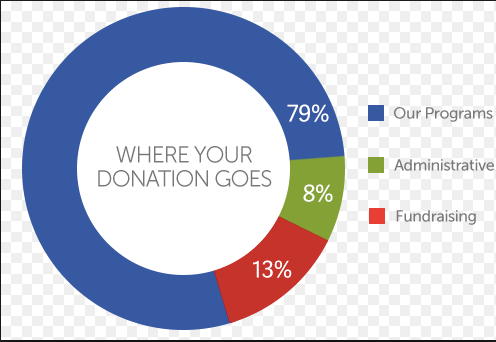
How to Tell Your Donors Where Their Money Is Going
November 15, 2018Preparing for #GivingTuesday 2018
November 20, 2018Your Ultimate Year-End Giving Guide
This article was originally published in Nonprofit Hub Magazine.
Rejoice, fundraisers—after months of hearing “I only give toward the end of the calendar year,” donors are finally in the spirit of giving. Fifty percent of nonprofits receive the majority of their annual donations between October and December, so follow these tips to use that knowledge to your advantage and know your year-end giving out of the park!
Be the (wo)man with the plan
Before you embark on your year-end giving voyage, be sure you have a game plan. Think about how different age groups tend to give (online, through the mail or in person) and tailor your asks to best suit each demographic. Determine what you did well last year and consider some things you could improve upon. Create a calendar indicating when you plan to reach out to donors, post on social media, send out emails, etc. The more you strategize, organize and plan, the more successful your campaign will be.
Have a purpose
Once you’ve acquired a solid marketing strategy, come up with a concrete goal you’d like to reach before the season ends. On your website and social media platforms, say something like, “This holiday season, our goal is to raise X amount of money for Y reason.” Update your audience on your progress frequently and utilize websites like Gesture and GiveSmart, which allow you to track fundraising in real-time. When people feel like they’re helping reach a specific goal and giving with purpose, they’ll be more motivated to donate.
Tell a story
People can’t get enough of heartwarming stories around the holidays, so tell one of your own. On top of storytelling in your captions, create promotional videos and share photos—especially sentimental ones—all season long. Seventy-four percent of donors say that their primary reason for giving is because “the holidays are a time to be thankful for what you have and give to those who need it,” according to Bloomerang. So, however you decide to do it, make sure you’re effectively communicating your story, mission and needs to your audience.
Amp up social media
When it comes to your social media game, the next few weeks are crucial. Be sure to emphasize the content mentioned above—keep everyone up to date on your fundraising goals and share tons of personal stories. Remember, the goal is to make your audience feel close to your organization even if they’re a million miles away. Use Facebook, Twitter and Instagram as a way to get personal with your followers and make them feel like they’re a part of something greater.
Be memorable
Now that you have your fundraising strategy down, it’s time to make your organization stand out from the rest. After all, the 1.5 million other nonprofits in America are also trying to reel in year-end donations. They’re all over social media and ramping up their emails, so your organization needs to think outside the box.
One way to do this is to text your donors. This often-overlooked fundraising method has proven to be very effective. In fact, mobile marketing company mGive reported that 85 percent of prospective donors said they’re looking for more ways to give money via mobile. Take advantage of that!
Another underrated way to draw attention to your nonprofit is by creating eye-catching graphics for your campaign. Use vibrant colors and simple tag lines to make your content stand out on the timeline. If you don’t have a designer on hand, websites like Canva can help you make beautiful graphics for free. This is also a creative way to display figures and statistics for your fundraising goal updates. These graphics will combine well with your live-action shots and add variety to your feed.
Finally, make your organization memorable by going above and beyond with your thank-you note. Even though you already have their money, it’s still incredibly important to make your donors feel special if you want to acquire repeat-donors before heading into the new year. Write thank-yous by hand if possible, use full names and, if you know the donors personally, tweak your message to address each individual. Most people are used to receiving generic, impersonal thank-you notes. If you go the extra mile here they’ll feel needed, appreciated and compelled to give again.
Follow these tips to make this year-end giving season your most successful one yet!
The post Your Ultimate Year-End Giving Guide appeared first on Nonprofit Hub.
